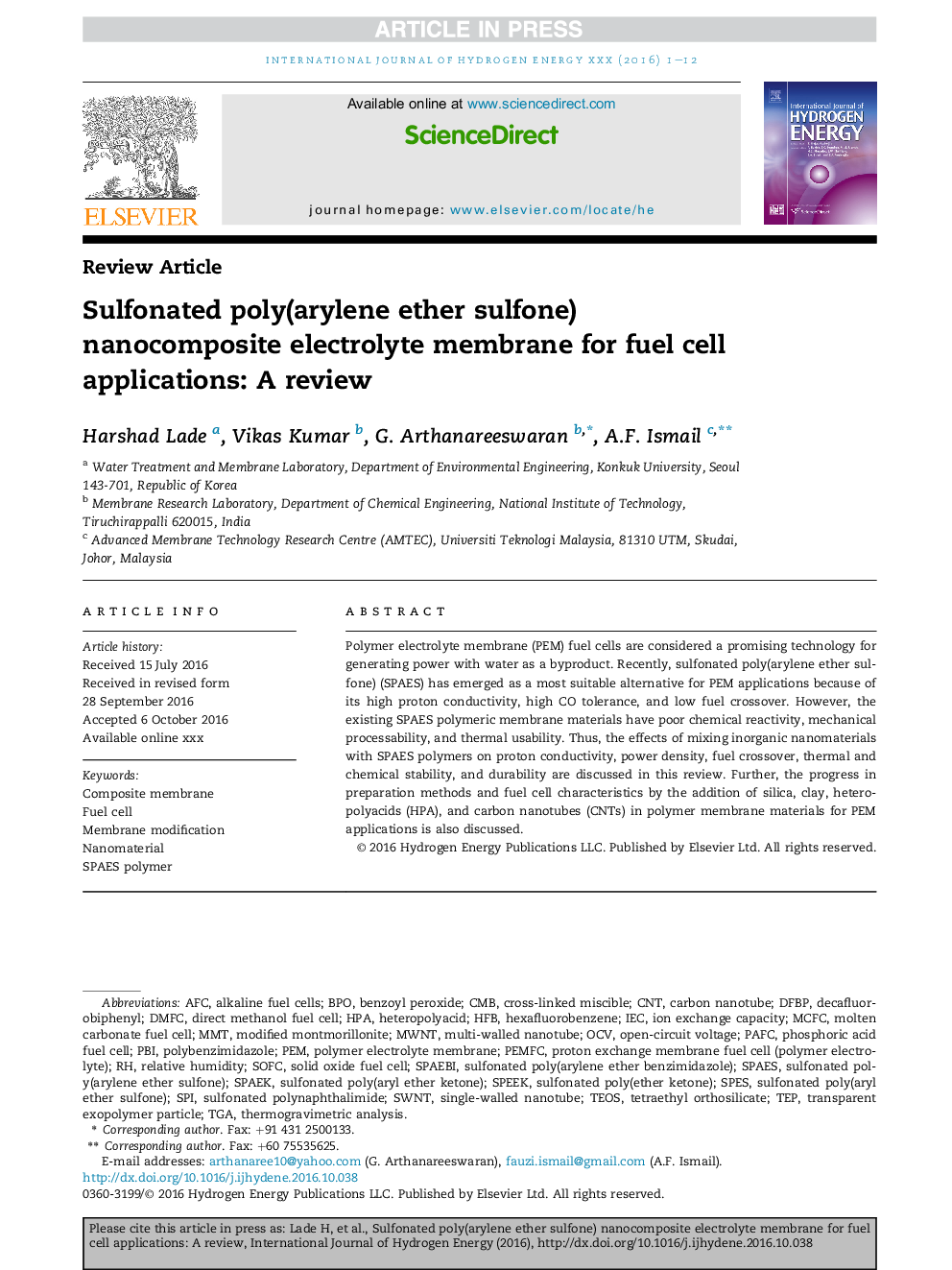| Article ID | Journal | Published Year | Pages | File Type |
|---|---|---|---|---|
| 5146710 | International Journal of Hydrogen Energy | 2017 | 12 Pages |
Abstract
Polymer electrolyte membrane (PEM) fuel cells are considered a promising technology for generating power with water as a byproduct. Recently, sulfonated poly(arylene ether sulfone) (SPAES) has emerged as a most suitable alternative for PEM applications because of its high proton conductivity, high CO tolerance, and low fuel crossover. However, the existing SPAES polymeric membrane materials have poor chemical reactivity, mechanical processability, and thermal usability. Thus, the effects of mixing inorganic nanomaterials with SPAES polymers on proton conductivity, power density, fuel crossover, thermal and chemical stability, and durability are discussed in this review. Further, the progress in preparation methods and fuel cell characteristics by the addition of silica, clay, heteropolyacids (HPA), and carbon nanotubes (CNTs) in polymer membrane materials for PEM applications is also discussed.
Keywords
tetraethyl orthosilicatePEMSPICMBMMTPBITEPHFBMWNTAFCBPOMulti-walled nanotubeSingle-walled nanotubeOCVDecafluorobiphenylSPAESPAFCMCFCTEOSSOFCPEMFCDMFcTGACNTSWNTSPESModified montmorillonitesPEEKbenzoyl peroxideThermogravimetric analysisMembrane modificationRelative humidityMolten carbonate fuel cellPhosphoric acid fuel cellsolid oxide fuel cellalkaline fuel cellsIon exchange capacityPolymer electrolyte membraneComposite membraneopen-circuit voltageHPACarbon nanotubeNanomaterialHeteropolyacidHexafluorobenzenePolybenzimidazoleSulfonated poly(arylene ether sulfone)fuel celldirect methanol fuel cellIEC
Related Topics
Physical Sciences and Engineering
Chemistry
Electrochemistry
Authors
Harshad Lade, Vikas Kumar, G. Arthanareeswaran, A.F. Ismail,
